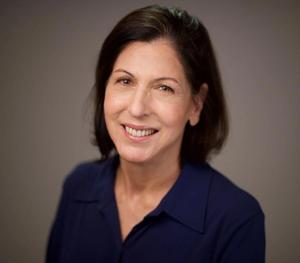Science
Trump’s Actions Threaten University Funding Amid Nobel Wins

In a surprising turn of events, six scientists based in the United States received Nobel Prizes over a short period, highlighting the pivotal role of public universities in the nation’s scientific achievements. Each laureate is either a current or former member of the academic community, with five associated with California’s renowned higher education system. This remarkable success contrasts sharply with President Donald Trump‘s ongoing criticisms and proposed cuts targeting these educational institutions.
Trump has voiced concerns about universities’ handling of free speech and student behavior, attributing certain incidents, including antisemitism, to a broader failure within these institutions. While the president’s rhetoric emphasizes a desire to “save” taxpayer money, it often manifests as financial threats to universities, including significant funding cuts. He stated, “We will cut funding by $584 million and thereby save taxpayer dollars.” These cuts could severely impact institutions like the University of California, Los Angeles (UCLA), which is at risk of losing federal research grants.
Among the recent Nobel laureates in medicine, Mary Brunkow and Fred Ramsdell share the award with Japan’s Shimon Sakaguchi. Both Brunkow and Ramsdell have strong ties to California’s educational system, with Ramsdell earning his degrees from the University of California, San Diego and Los Angeles. Their achievements underscore the critical role that public universities play in fostering scientific talent.
In the field of physics, three scientists, including American John Martinis, who earned all his degrees at Berkeley, were recognized for their groundbreaking work on quantum mechanics. Similarly, Omar Yaghi, awarded the Nobel Prize in Chemistry, is a faculty member at Berkeley and has connections to several prestigious universities.
California’s economic prowess is noteworthy; if it were a separate country, it would rank as the world’s fourth-largest economy. In response to potential federal funding losses, state lawmakers are exploring a $23 billion bond measure for the 2026 ballot aimed at sustaining scientific research funding. Should this initiative pass, California could establish its own grant and loan system, effectively bypassing federal support that currently flows from the National Institutes of Health (NIH).
The NIH, the largest funder of medical research globally, has seen at least 24 University of California and California State University campuses lose training grants under the current administration. With Trump appointing Bobby Kennedy Jr., a controversial figure known for his anti-vaccine stance, to lead the NIH, concerns about the future of scientific research funding have escalated.
As California contemplates taking control of its funding, states like Washington and Oregon are joining forces to address similar concerns regarding scientific research and public health. They are forming coalitions to evaluate vaccine data and provide recommendations, reflecting a growing trend among states to take proactive measures in scientific governance.
The implications of Trump’s funding cuts and his administration’s approach to higher education resonate far beyond California. The potential repercussions for universities across the nation could hinder research and innovation, as many of the brightest minds in the country face challenges from political decisions that may undermine their work.
In summary, the recent Nobel Prize wins serve as a reminder of the invaluable contributions of American universities to global science. Yet, the current political climate raises questions about the future of academic funding and research in the United States, particularly as states seek to assert greater autonomy over their educational and scientific resources.
-

 Technology5 months ago
Technology5 months agoDiscover the Top 10 Calorie Counting Apps of 2025
-

 Technology2 weeks ago
Technology2 weeks agoOpenAI to Implement Age Verification for ChatGPT by December 2025
-

 Health3 months ago
Health3 months agoBella Hadid Shares Health Update After Treatment for Lyme Disease
-

 Health3 months ago
Health3 months agoErin Bates Shares Recovery Update Following Sepsis Complications
-

 Technology4 months ago
Technology4 months agoDiscover How to Reverse Image Search Using ChatGPT Effortlessly
-

 Health3 months ago
Health3 months agoAnalysts Project Stronger Growth for Apple’s iPhone 17 Lineup
-

 Technology3 months ago
Technology3 months agoElectric Moto Influencer Surronster Arrested in Tijuana
-

 Technology1 month ago
Technology1 month agoDiscover 2025’s Top GPUs for Exceptional 4K Gaming Performance
-

 Technology5 months ago
Technology5 months agoMeta Initiates $60B AI Data Center Expansion, Starting in Ohio
-

 Technology5 months ago
Technology5 months agoRecovering a Suspended TikTok Account: A Step-by-Step Guide
-

 Health5 months ago
Health5 months agoTested: Rab Firewall Mountain Jacket Survives Harsh Conditions
-

 Lifestyle5 months ago
Lifestyle5 months agoBelton Family Reunites After Daughter Survives Hill Country Floods





















